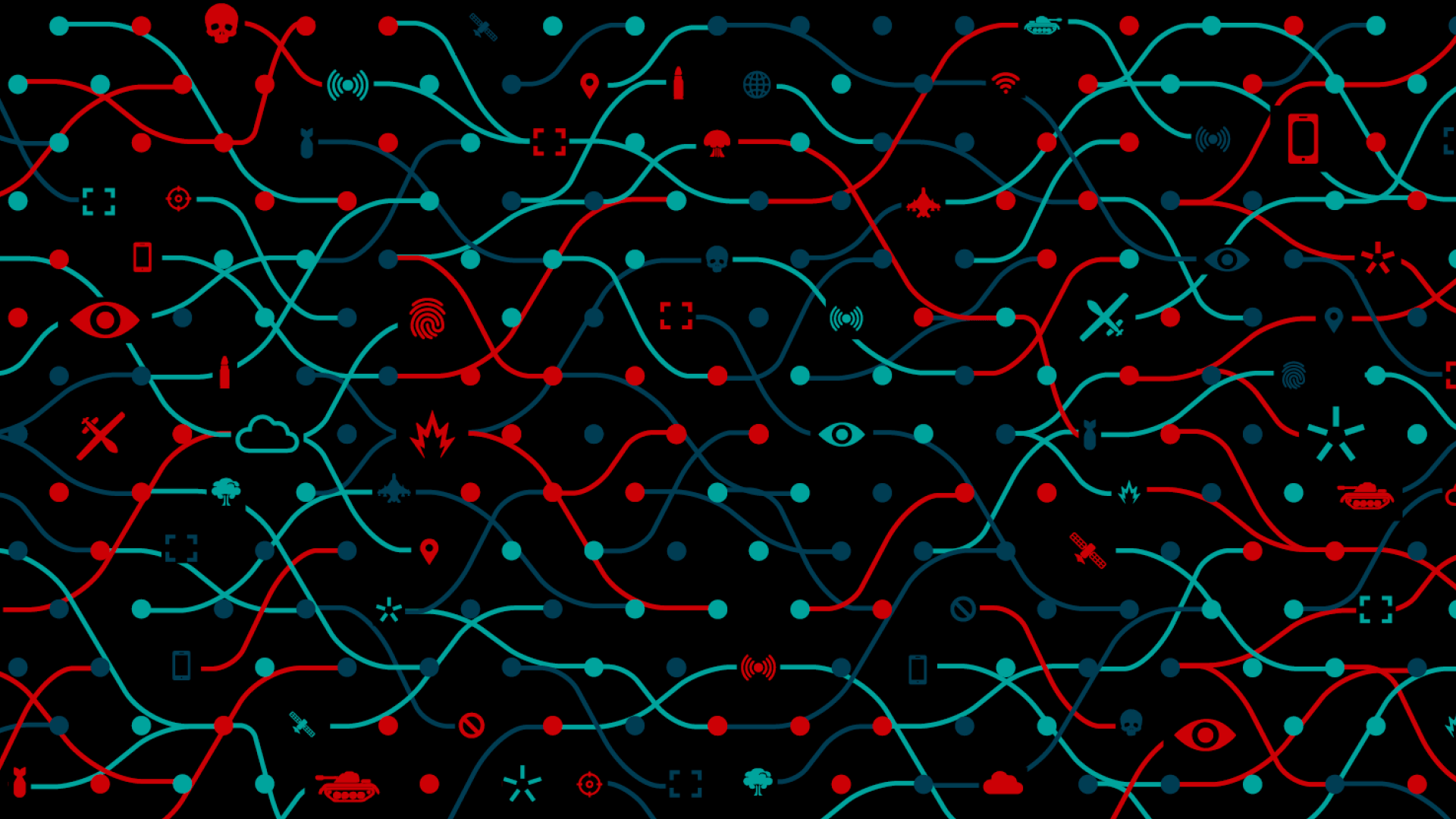Research Fellows · Cian Westmoreland: Research · Bio

“As the architectures of war dissolve accountability into networks of remoteness and convolution, our task is to reweave a thread strong enough to ensure that decision to take human life never vanishes into the silence of machines.”
Research: Architecture of Disappearance: The Kill Cloud’s Dispersal of Violence and Erosion of Sovereignty
Cian Westmoreland · Whistleblower, Former US Air Force Drone Technician, US
“Seemingly non-violent technical acts we were trained to do came to a head when we started hearing battle managers coordinating airstrikes from within the Operations Modules. Radios and servers patched into distant ends, transferring enormous amounts of encrypted Command and Control data, enriched with surveillance - passing unimpeded through airwaves - like invisible nervous systems for a larger organism with many moving parts across a globe - culminating in the destruction of human histories at the push of a button by some nihilistic kid drinking a Monster in a Ground Control Unit in Sin City, Nevada.”
This describes the essence of what has come to be called the Kill Cloud: a planetary assemblage of satellites, data centers, algorithmic targeting systems, and human operators, bound together by infrastructures that render violence at once dispersed and instantaneous. Its significance is not merely technical or tactical. What it reveals is the transformation of warfare into a system where the most banal technical gestures - configuring a server, patching a radio, maintaining an encrypted channel - become the synaptic relays of a global war-machine. Violence is no longer reducible to the sovereign decision of a commander or the act of a soldier; it emerges from the orchestration of countless distributed actions, each framed as routine, each apparently detached from killing - yet cumulatively producing destruction.
Sovereignty and Infrastructural Power
The Kill Cloud must therefore be understood not merely as technology, but as an ethical counter-architecture of war: an organism of humans and machines in which responsibility is diffused to the point of disappearance. The metaphor of “invisible nervous systems” is crucial. Just as neurons fire automatically, the infrastructures of war now pulse with signals that traverse oceans and orbitals, binding together defense contractors, intelligence agencies, and corporate platforms into a living assemblage of violence. In Deleuzian terms, it is a war-machine: a distributed entity whose agency is irreducible to any single actor, yet whose operations culminate in targeted death.
The geopolitical consequences are profound. Traditional warfare anchored responsibility in sovereign states and commanding officers; the Kill Cloud disperses agency across private corporations, subcontractors, software engineers, and machine-learning systems. SpaceX satellites, Google, Palantir analytics, Amazon Web Services, Anduril autonomy platforms - these do not merely support war, they govern it. They function as what might be called the invisible generals of contemporary conflict: actors who exert infrastructural sovereignty without bearing the legal or moral obligations of combatants. International law, built on the presumption of identifiable actors and jurisdictions, collapses in the face of such dispersed assemblages. Precision and speed are achieved at the cost of dissolving accountability.
The Multipolar Arms Race
What makes this architecture more dangerous is that it does not exist in isolation. The United States may have pioneered the Kill Cloud, but rival powers are constructing parallel systems. China’s intelligentized warfare doctrine envisions an AI-driven C4ISR network, fusing BeiDou satellites, drone swarms, and machine-learning platforms into an integrated battlespace. Russia has pursued autonomous reconnaissance and strike systems, pairing them with electronic warfare and hybrid operations that blur the lines between combat and civil life.
Thus, the architecture of disappearance is no longer American, but planetary. Competing powers construct their own clouds, each embedding violence into infrastructures that transcend borders, each eroding the very notion of sovereignty they claim to defend. What emerges is not simply an arms race, but an infrastructural cold war: a competition to dominate the planetary nervous system itself. The danger is not only escalation but normalization - the acceptance that every society must live under permanent algorithmic crosshairs.
The Human Condition under Dispersed Violence
For civilians, the Kill Cloud produces a condition of permanent exposure. To live under its gaze is to exist in a battlespace that is both everywhere and nowhere, where the distinction between peace and war evaporates. For those who operate within it, the Cloud inflicts a new moral injury: participation in killing without ever fully deciding or witnessing it, pressing buttons in Nevada that erase lives in Afghanistan, or maintaining the conduits through which orders to kill circulate across the globe. For states, it destabilizes sovereignty itself, transforming war into a logistical practice embedded in infrastructures that transcend borders.
The danger is not simply technological but existential. The Kill Cloud normalizes war as an ambient condition of global networks, embedding it into corporate governance and technical infrastructures. It erases the human face - both of those who are killed and those whose banal labor enables killing.
Toward Counter-Architectures
Yet precisely because the Kill Cloud is an architecture, it is contestable. Just as its nervous systems weave together satellites, data, and corporate infrastructures, so too can alternative architectures be imagined - ones that embed accountability, transparency, and restraint into the very fabric of command and control. These would not attempt to return to a mythical past of “clean” warfare, but rather to design governance systems - technical, legal, and diplomatic - that render visible the hidden flows of responsibility.
Where the Kill Cloud disperses, such counter-architectures would consolidate chains of accountability. Where the Cloud enforces invisibility, counter-architectures would make violence visible. Where the Cloud erases human agency, counter-architectures would restore it. The task is not merely to critique but to recognize that infrastructures of war can only be countered by infrastructures of restraint.
Conclusion
The Kill Cloud is not simply a military innovation. It is an architecture of disappearance: erasing accountability by dispersing it, normalizing war by embedding it in everyday infrastructures, and reshaping the human condition by transforming violence into an ambient feature of global life. If left unchecked, it will not only alter the practice of war but dissolve the very categories - sovereignty, responsibility, humanity - upon which the international order depends.
But the Kill Cloud is not singular. It is multiplying. Chinese, Russian, and other iterations confirm that the problem is civilizational, not national. The future will not be determined solely by the sophistication of weapons, but by whether humanity can construct ethical counter-architectures powerful enough to restrain them.
Cian Westmoreland
Whistleblower, Former US Air Force Drone Technician, US
Cian Westmoreland specialized in C4ISR technologies in the United States Air Force, serving at Kandahar Airfield, Afghanistan in 2009 with the 73rd Expeditionary Air Control Squadron, where he helped network air and space assets with ground operations and distant command centers. After receiving an award and conducting research into civilian casualties connected to his unit’s operations, he left the military to study International Relations. He became an outspoken critic of the U.S. military’s overreliance on remote killing in the Global War on Terror, citing its lack of accountability and the strategic blowback it generates. His current research focuses on the networked and diffused decision-making processes in modern warfare, particularly as they converge in the development of autonomous weapon systems (AWS).

